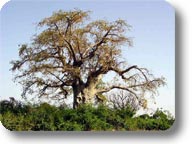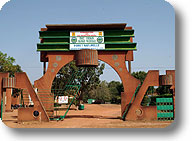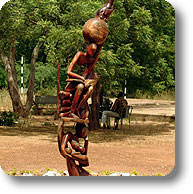Protected Area

- Park Authority: Parc Urbain Bangr-Weoogo Commune de Ouagadougou
- Headquarters: 06.BP.9535 Ouagadougou 06
- Tel: 226 50369501
- Fax: 226 50369504
- E-mail: pubangrweoogo@cenatrin.bf
- Area: 260 ha
- Province: Kadiogo
- Established in: Municipal Park since 2001
Parc Urbain Bangr-Weoogo
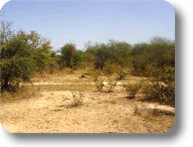
For this reason, since 1997 Regione Piemonte has decided to adopt an "alimentary safety program" in some countries of Sahel like Burkina Faso, Niger, Benin, Mali, Senegal and which this year has been extended to Mauritania and Cape Verde.
The Burkinian Government has recently adopted a policy aimed at drawing the populations of the territories adjacent to the protected areas closer one to another, involving them in programs of controlled selective hunting, activity from which they obtain both food and economic resources; moreover, a part of both permanent and temporary staff of the parks is hired in the villages, above all for activities of public interest and to control fires.
The so-called "village animators" also work for the protected areas: their aim is to sensitize the population towards the objectives of the protected areas and to gather their needs, trying to make them compatible needs.
Also known as Fôret Classée du Barrage de Ouagadougou, it has been one of the first protected areas in Burkina, once belonging to the Emperor of the Mossé Moro-Naba. It has been a protected area since 1936, and afterwards it has become a "urban park". Characterized by a great diversity of vegetal formations, linked above all to the permanent presence of water and different pedolithological typologies, it offers to the visitor botanic gardens which will be soon enlarged, a zoological park where animal species typical of the Country will be introduced, and an area of savannah, sometimes covered with trees and sometimes marshy, dedicated to walks and entertainment in the natural environment.
The Urban Park of Ouagadougou is an ancient sacred forest of 260 ha, already classified by the French in 1936 and representing a green lung for the town, a place of entertainment, and, as the name Bangr-Weoogo says, a “forest where you acquire knowledge“, a privileged place for environmental education.
The contribution given by the creation of the herbarium is functional among the main activities of the Urban Park.
Another priority is represented by the restoration of the huts for the observation of the species living in the area (roan antelope) and the improvement of the fences at the Park entrances, where you can see the Sahel turtle, small monkeys and hyenas: the cooperation with Parco Orsiera-Rocciavré has been useful to these purposes. Next year it will also collaborate to the reintroduction of other roan antelopes through the creation of water points.
The Collaboration Project
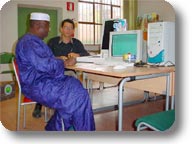
In particular, starting with Burkina Faso, the aim is to improve the situation of the people living in a rural environment, at direct contact with the Sahel forests and near protected areas, and to do it together with the population itself and through compatible policies to preserve the forests. The achievement of alimentary safety and the struggle against the poverty of the local population are two primary objectives, together with the protection and conservation of the Sahel natural resources.
The promoters of the projects are creating a strong network of public and private subjects who, according to the principles of decentralized cooperation, collaborate to carry out various activities, like actions of reciprocal institutional support, micro-activities, research activities, training seminars, etc.
The initiative will benefit first of all the inhabitants of the involved areas and the operators (technical and political operators) of the active subjects. The synergies and long-lasting relationship created between the various authorities, the improvement of the environmental policies, the opportunities of economic and cultural growth deriving from the project will indirectly benefit all the inhabitants of the involved Countries.
In April 2002, the director of Parc Urbain Bãngr-weoogo, M. Moustapha Sarr, came to Turin for a meeting between the two parks.
He came back in October together with M. Daniel Compaoré, head of the technical service of Parc Urbain Bãngr-weoogo, during the 2nd National Conference on Protected Areas, where a stand was prepared to present the ongoing projects with photos, original batik, panels, and audiovisual documents. In November, Roberto Pascal and Dino Genovese, Park Keepers of Parco Naturale della Collina di Superga went to Ouaga to work for the computerized herbarium and to visit Parc Urbain Bãngr-weoogo.
Physical and Computerized Herbarium
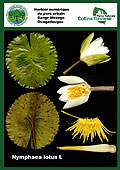
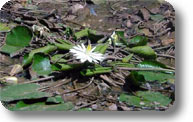
The photography techniques, necessary for the reproduction and scanning of the images, have been taught them by Dante Alpe, Park Keeper and photographer of Parco Orsiera-Rocciavrè.
Structural Collaboration
Development Prospects
- prosecution of the cataloguing of the vegetal species with the technology of the “computerized herbarium”;
- production and diffusion of the multimedia CD containing the images of the scanned vegetal species;
- training in Piedmont of 3 technicians dealing with the management of the computerized herbarium;
- collaboration with the University of Turin and the University of Ouagadougou for the pharmacological survey on the catalogued plants;
- training stage in Turin for 2 technicians of Settore Aree Verdi of the Town of Ouagadougou in the field of gardening;
- evaluation of the opportunity to carry out a research on the feasibility for the drainage of the watercourse crossing Parc Urbani Bãngr-weoogo.
